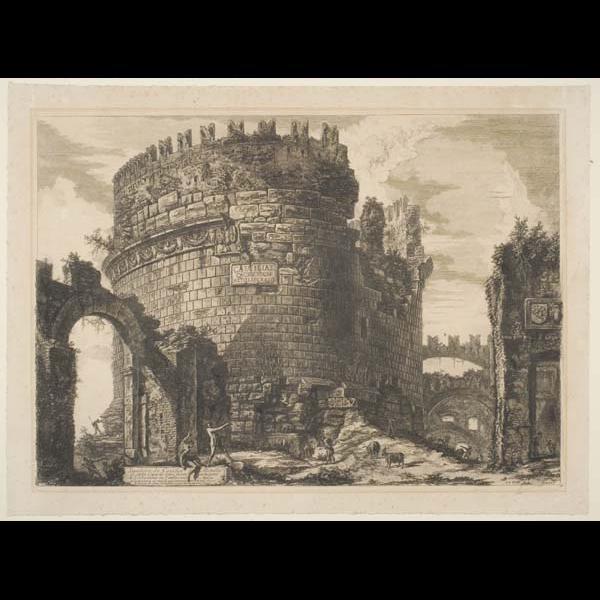Piranesi, Tomb of Caecilia Metella

Tomb of Caecilia Metella (Sepolcro di Cecilia Metella), Giovanni Bastista Piranesi, 1762. Davis Museum at Wellesley College, 1999.0.404.
This print, titled Tomb of Caecilia Metella, or Sepolcro di Cecilia Metella, is part of the artist Giovanni Battista Piranesi’s print series, Views of Rome, or Vedute di Roma. It dates back to 1762 and portrays the circular mausoleum, which was originally built sometime during the 1st century BC. Caecilia Metella was a member of the Caecilius Metellus family, notable for their wealth and noble status in ancient Rome.
The tomb itself is located on Via Appia three miles outside of Rome. It was originally composed of a cylindrical drum atop a square base with a hollow center. A Latin inscription on its exterior reads: “CAECILIAE | Q· CRETICI· F | METELLAE· CRASSI” which can be translated to: “To Caecilia Metella, daughter of Quintus Creticus and wife of Crassus.” Later architectural additions include a castle that was attached to the mausoleum and medieval battlements that were built on top of the circular drum. Both additions were added when the mausoleum was used as a fortress in the early 14th century and both can be seen in the print.
Piranesi chooses to portray the monument from a lower point of view and a shallower spatial depth than some of his other prints (see Veduta di Campo Vaccino (1772)). He often uses these two stylistic elements to help emphasize the grandeur and monumentality of his subject. This is evidenced in other, similar monumental compositions, Obelisco Egizio (date unknown) and Temple of Saturn (1774). Additionally, Piranesi’s characteristic style of highly detailed decoration paired with diagonal lighting and shadowing gives his print a more dramatic and pictorial nature. The playful interaction between the individual in the left foreground and the explanatory label adds an illusionistic element to the print as well.